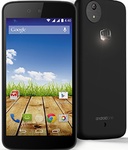Realme 7 Pro Review - Android
The Realme 7 Pro has made its way to the Philippines and it promises a couple of upgrades over its predecessor. Spoiler alert, Realme made a couple of bold choices for this device — some of them are good, while some of them are quite controversial. With that, here in our Realme 7 Pro review, […] More
This article, Realme 7 Pro Review, was originally published at NoypiGeeks | Philippines Technology News, Reviews and How to's.
The Realme 7 Pro has made its way to the Philippines and it promises a couple of upgrades over its predecessor.
Spoiler alert, Realme made a couple of bold choices for this device — some of them are good, while some of them are quite controversial. With that, here in our Realme 7 Pro review, we’ll see if this device is worth your time and money.
Realme 7 Pro Specs
- Android 10, Realme UI
- Dual SIM, Dual Standby
- 6.4-inch FHD+ Super AMOLED display, 2400 x 1080 pixel resolution, 309ppi
- Corning Gorilla Glass
- TÜV Rheinland certified
- 2.3GHz Qualcomm Snapdragon 720G octa-core processor
- 8GB LPDDR4X RAM
- Adreno 618 GPU
- 128GB UFS 2.1 internal storage, expandable via microSD
- 32-megapixel front camera, f/2.5
- 64-megapixel (IMX682, f/1.8) + 8-megapixel (ultra-wide, f/2.3) + 2-megapixel (mono) + 2-megapixel (macro) rear cameras
- Stereo speakers, Hi-Res Audio, Dolby Atmos
- In-display fingerprint scanner, Face unlock
- HSPA+, 4G LTE
- WiFi 802.11 a/b/g/n/ac, dual-band
- Bluetooth 5.1
- GPS, A-GPS, BDS, GLONASS, NAVIC
- USB Type-C
- Dimensions: 160.9 x 74.3 x 8.7mm
- Weight: 182g
- Colors: Mirror Silver, Mirror Blue
- 4,500mAh non-removable battery, 65W SuperDart Charge
Design and Build Quality
We’ve said it before and we’ll say it again: Realme is one of the most imaginative brands in the market today. They keep on coming up with new designs on their every release, and the Realme 7 series is one of them.
 Realme 7 | 7 Pro
Realme 7 | 7 ProIt’s available in two colors. There’s the Mirror Silver, and the one we have here, the Mirror Blue option. It has this really dark tone, almost navy-blue-like, that looks really stealthy.
It may be made of plastic, but it sure doesn’t look like it. The Realme 7 Pro has this clean split design, with the vertical strip on the left side that transcends to the rectangular camera glass on top and the Realme logo on the bottom.

Fingerprint marks and smudges are not visible unless you look closely. You can slap in the dark clear case that it comes with to keep it clean and for extra safety in case of accidental drops.
The Realme 7 Pro is also noticeably lighter and more comfortable in the hands than the Realme 6 Pro. It only weighs 182g (from 202g) and 8.7mm thick (from 8.9mm).

On the front, we have a decent-sized 6.4-inch FHD+ Super AMOLED screen. Going with an OLED panel made the bezels relatively thin. The punch-hole on the top left for the selfie camera also helped to achieve its 90.8% screen-to-body ratio.
Realme used a Corning Gorilla Glass protection on the screen, but the actual version used was not mentioned. A screen protector is pre-applied for extra safety measures. There’s a tiny slit on the top bezel for the earpiece that doubles as the secondary speaker.

The top only has the second microphone for noise cancellation, while on the bottom we have the primary mic, a headphone jack (thankfully), USB Type-C, and the bottom-firing speaker.

We have the SIM tray on the upper left side, which can house two nano-SIM cards and a microSD card — all at the same time. Below are the volume controls, while on the other side we have the lock/power button, which has a gold accent. Nice touch.

The physical buttons provide an audible clicky sound when pressed, although it feels plasticky.

Overall, we’re satisfied with the design of the Realme 7 Pro. It doesn’t have a wow factor, but we appreciate the refreshing, clean, and compact design.
Display and Sound
Here’s where things get a bit controversial. In the specs list above, you might have notice that Realme dropped the fast 90Hz refresh rate of the Realme 6 Pro in lieu of a more vibrant Super AMOLED panel. As per the company, this is what the fans wanted, so they obliged.

But having used both devices, I gotta say it was a smart move. The difference in speed between the Realme 6 Pro’s 90Hz screen versus a regular 60Hz refresh rate that the Realme 7 Pro has is almost negligible.
That’s why it made sense to downgrade the refresh rate and upgrade the IPS to a Super AMOLED panel instead. It provides more vibrant colors, deeper contrast, and enables its Always-On Display feature. The Realme 7 Pro is also TUV Rheinland verified to protect your eyes.

The real upgrade here is in the audio department. It now has a stereo speaker setup that provides great separation. It’s good for watching movies, creating a surround sound experience, and for playing shooter games as it gives you a visualization on where footsteps are coming from. However, the overall volume and clarity is a bit lacking.
Realme also equipped the 7 Pro with Dolby Atmos and Hi-Res audio. If you want a more in-depth listening experience, you can plug in a pair of earphones. It doesn’t come with one, so you might want to check out Realme’s audio devices that fit your needs and budget.
Hardware and Performance
The Realme 7 Pro kept the same 2.3GHz Qualcomm Snapdragon 720G processor of its predecessor. This means that it still has an Adreno 618 GPU, 8GB of RAM, and 128GB of expandable storage.
Realme 7 Pro benchmark scores

With that, performance is pretty much the same: fast and reliable. You can run basic and day-to-day tasks — such as Facebook, Instagram, watching videos, taking pictures, etc — without a hitch.
 Call of Duty Mobile | Mobile Legends
Call of Duty Mobile | Mobile LegendsGaming was also great on the Realme 7 Pro. Despite the lack of a fast 90Hz refresh rate, playing games is really smooth. We were able to play demanding games such as Call of Duty Mobile with the graphics and frame rate settings set to High and Very High, respectively.
With that, it’s no surprise that light and popular games like Mobile Legends and PUBG Mobile also ran smoothly on this device.
Software and User Interface
As per usual, the new Realme 7 Pro runs on Android 10 OS with the Realme UI interface on top. It’s already confirmed to receive the Android 11-based Realme UI 2.0, so rest assured it’s futureproofed.
 App Drawer | Search/News Page | Notifications Tab
App Drawer | Search/News Page | Notifications TabWith that said, Realme UI is really clean and straightforward. Almost close to the stock-Android look and feel.
 Smart Tab | Home Screen and Lock Screen Settings
Smart Tab | Home Screen and Lock Screen SettingsSmart Tab gives you quick access to screenshot, screen recording, and apps of your choosing. It’s enabled out of the box but remains inconspicuous on the corner, so no problems there.
Realme UI is also heavy in customization. You can opt to remove the app drawer, change the home screen layout, app animation speed, set themes, wallpapers, and icon style, and more.
 Smart Driving | Digital WellBeing | Screen Recording settings
Smart Driving | Digital WellBeing | Screen Recording settingsSmart Driving and Riding Mode are present for safety while you’re on the road. Digital Wellbeing monitors your smartphone usage. Google’s Parental Controls lets you set limitations to regulate screen time.
If you like recording your gameplay, the Realme UI has pretty comprehensive screen recording settings. You can opt to add voice recording using the device’s microphone, change video resolution, show screen touches, and more.
 Storage | Camera App | Google Keyboard
Storage | Camera App | Google KeyboardOut of the 128GB of storage, 15GB of it is reserved for the system. The camera app is familiar and intuitive while the Google Keyboard is easy to get used to.
Security
Since it now has an AMOLED panel, the Realme 7 Pro now has a UD fingerprint scanner instead of a side-mounted one. The fingerprint icon lights up the moment you pick up the device so you can unlock it instantly. You can also choose from different fingerprint animations in the settings.

For faster access, you can enable the Face Unlock feature. It automatically detects your face the moment you raise the device, no need to reach for the fingerprint scanner. Plus, it works really fast and well.
The phone uses the 32-megapixel selfie camera, no night-seeing IR sensors. So in low-light, it maxes the brightness of the screen to act as a flash to see your face.
The Realme 7 Pro also has privacy features like App Lock, Kid Space, Private Safe and more.
Camera
Just like its predecessor, one of the key highlights of the Realme 7 Pro is its cameras. The main camera is now a 64-megapixel Sony IMX 682 sensor, versus the Samsung ISOCELL GW1 of the 6 Pro. Realme removed the somewhat useless short-range telephoto lens to make this upgrade.

Completing the quad-camera setup is the 8-megapixel ultra-wide camera, 2-megapixel mono, and 2-megapixel macro.
Another odd change on the 7 Pro is the removal of the secondary selfie camera. Realme got rid of the ultra-wide front camera to upgrade the 16-megapixel main sensor to a sharper 32-megapixel.
Realme 7 with MediaTek Helio G95 - Specs Rundown
01/10/2020 05:05 AM
OPPO holds 2020 developer conference online
01/10/2020 07:30 AM
Lenovo Smart Tab M10 FHD Plus Review
01/10/2020 05:32 AM
Paymaya extends free bank transfers via Instapay until Oct 31
01/10/2020 01:03 PM
One CHERRY One Ecosystem, Officially Launched! Here's What It's All About!
01/10/2020 12:28 PM
CHERRY expands to create an ecosystem of products and services
01/10/2020 12:19 PM
Google Pixel 5, Pixel 4a 5G specs, price announced
01/10/2020 08:50 AM
No Facebook ban in the Philippines — Malacañang
01/10/2020 03:39 AM
- HEALTH
- Comics
- Libraries & Demo
- Sports Games
- Racing
- Photography
- Transportation
- Media & Video
- Sports
- Health & Fitness
- Weather
- Medical
- Cards & Casino
- Arcade & Action
- Personalization
- Social
- Communication
- Productivity
- Casual
- Shopping
- Tools
- Brain & Puzzle
- Business
- News & Magazines
- Finance
- Lifestyle
- Music & Audio
- Entertainment
- Travel & Local
- Books & Reference
- Education
2014 © Filipino apps and news






